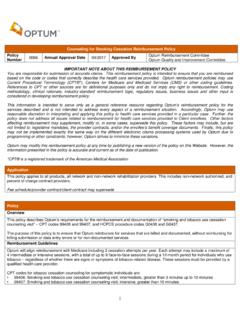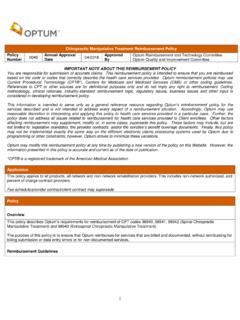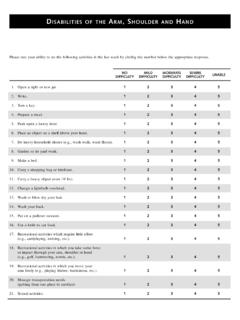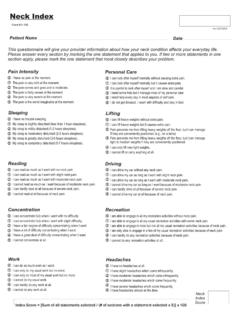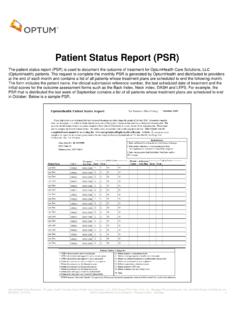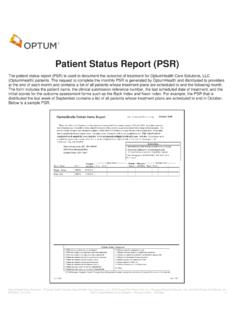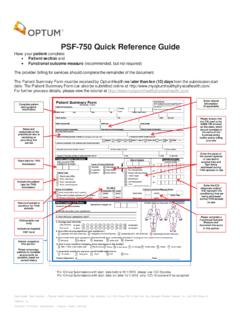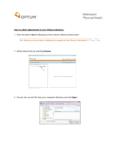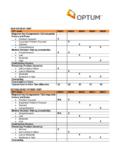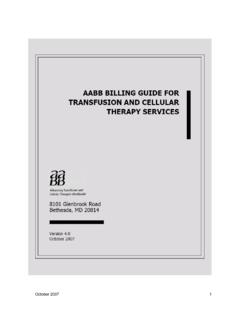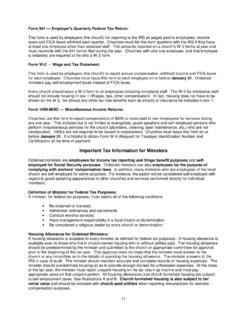Transcription of IMPORTANT NOTE ABOUT THIS REIMBURSEMENT …
1 1 Documentation Requirements for Timed Therapeutic Procedures REIMBURSEMENT Policy Policy Number 0049 Annual Approval Date 04/2018 Approved By Optum REIMBURSEMENT and Technology Committee Optum Quality and Improvement Committee IMPORTANT NOTE ABOUT this REIMBURSEMENT POLICY You are responsible for submission of accurate claims. this REIMBURSEMENT policy is intended to ensure that you are reimbursed based on the code or codes that correctly describe the health care services provided. Optum REIMBURSEMENT policies may use Current Procedural Terminology (CPT *), Centers for Medicare and Medicaid Services (CMS) or other coding guidelines. References to CPT or other sources are for definitional purposes only and do not imply any right to REIMBURSEMENT .
2 Coding methodology, clinical rationale, industry-standard REIMBURSEMENT logic, regulatory issues, business issues and other input is considered in developing REIMBURSEMENT policy. this information is intended to serve only as a general reference resource regarding Optum s REIMBURSEMENT policy for the services described and is not intended to address every aspect of a REIMBURSEMENT situation. Accordingly, Optum may use reasonable discretion in interpreting and applying this policy to health care services provided in a particular case. Further, the policy does not address all issues related to REIMBURSEMENT for health care services provided to Client enrollees. Other factors affecting REIMBURSEMENT may supplement, modify or, in some cases, supersede this policy.
3 These factors may include, but are not limited to: legislative mandates, the provider contracts, and/or the enrollee s benefit coverage documents. Finally, this policy may not be implemented exactly the same way on the different electronic claims processing systems used by OptumHealh due to programming or other constraints; however, Optum strives to minimize these variations. Optum may modify this REIMBURSEMENT policy at any time by publishing a new version of the policy on this Website. However, the information presented in this policy is accurate and current as of the date of publication. *CPT is a registered trademark of the American Medical Association Application this policy applies to all products, all network and non-network rehabilitation providers. this includes non-network authorized, and percent of charge contract providers.
4 Fee schedule/provider contract/client contract may supersede Policy Overview this policy describes Optum s documentation requirements for REIMBURSEMENT of the Physical Medicine and Rehabilitation (PM&R) CPT codes which make up the timed, skilled, direct one-on-one component of treatment. Specifically CPT codes, 97110-97140, 97530-97542, 97750-97762. REIMBURSEMENT Guidelines Documentation Requirements Timed Therapeutic Intervention Optum will align timed therapeutic treatment documentation requirements with the American Physical Therapy Association s Defensible Documentation for Patient/Client Management document and Centers for Medicare and Medicaid Services (CMS) National Policy. Background Information 2 The CPT section devoted to therapeutic procedures contains many of the CPT codes utilized by rehabilitation providers to describe the skilled, direct one-on-one component of treatment.
5 These codes describe the bulk of hands-on, skilled care typically provided by rehabilitation providers. CPT defines Therapeutic Procedures 97110-97140, 97530-97542, 97750-97762 as follows: A manner of effecting change through the application of clinical skills and/or services that attempt to improve function. Physician or therapist required to have direct (one-on-one) patient contact. Therapeutic procedure, one or more areas, each 15 minutes; Additionally, the definition of CPT codes 97750-97755, Therapeutic Procedures, Tests and Measurement includes, with written report, each 15 minutes. In the case of the timed therapeutic CPT codes, documentation should reflect the thought process and skilled decision making of the licensed therapy provider. As such, documentation of patient/client care needs to be more than a litany of procedures related to a date of service.
6 Documentation must include evidence of knowledge and skill related to the procedures performed. It also should provide verification of professional judgment. this concept of clinical decision making can be incorporated into clinical documentation. General Guidelines In addition to the documentation requirements referenced in Optum s Guideline for Record Keeping policy, there are specific requirements that must be evident in the patient medical record for REIMBURSEMENT of certain time-based therapeutic procedure interventions. Documentation of certain timed-based procedures should be recorded on the day of the patient visit and include both of the following: A. Substantiation that the skilled services of a licensed therapy provider or physician were required. B. Substantiation that services met the one-on-one timed-based requirement.
7 40. Skilled Intervention 1. Documentation to support skilled intervention is required. Demonstration of skilled care requires documentation of the type and level of skilled assistance given to the patient, clinical decision making or problem solving, and continued analysis of patient progress. this may be documented by recording both the type and amount of manual, visual, and/or verbal cues used by the licensed therapy provider to assist the patient in completing the exercise/activity completely and correctly. Skilled care may also be documented through explanation regarding rationale for choosing the interventions and/or the rationale for the continued use of the intervention. Another way of documenting skilled care may be to provide documented observation regarding responses before, during, and after an intervention as well as the patient s specific response to the intervention.
8 2. Services related to activities for the general good and welfare of patients, , general exercises to promote overall fitness and flexibility and activities to provide diversion or general motivation, do not constitute skilled physical medicine and rehabilitation services. Services provided by practitioners/staff who are not qualified licensed therapy providers are not skilled intervention services. Unskilled services are palliative procedures that are repetitive or reinforce previously learned skills, or maintain function after a maintenance program has been developed. 3. The services shall be of such a level of complexity and sophistication or the condition of the patient shall be such that the services required can be safely and effectively performed only by a licensed therapy provider.
9 Services that do not require the skill of a licensed therapy provider are not considered skilled services, even if they are performed or supervised by a qualified professional. 4. While a patient s particular medical condition is a valid factor in deciding if skilled physical medicine and rehabilitation services are needed, a patient s diagnosis or prognosis should never be the sole factor in deciding that a service is or is not skilled. The key issue is whether the skills of a licensed therapy provider are needed to treat the illness or injury, or whether the services can be carried out by unskilled personnel. 3 40. Timed Intervention 1. Documentation to support the reporting of timed procedure codes is required. The time reported should reflect direct one-on-one contact time with the patient.
10 Supervised treatment in the absence of skilled intervention is not billable time. Billable time should reflect the time that the provider spent with the patient and not just the time the patient spent performing supervised procedures in the clinic. The amount of billable one-on-one units that can be charged per day is partly dependent on the number of hours per day that a licensed therapy provider works. A licensed therapy provider cannot be one-on-one with more than one patient at any given time. Only the time spent by the licensed therapy provider in direct one-on-one care with a patient may be counted and billed as direct contact time. The total timed code treatment minutes must be documented in the daily medical record and be consistent with the number of timed codes billed as outlined in the Units Number of Minutes listing below.
